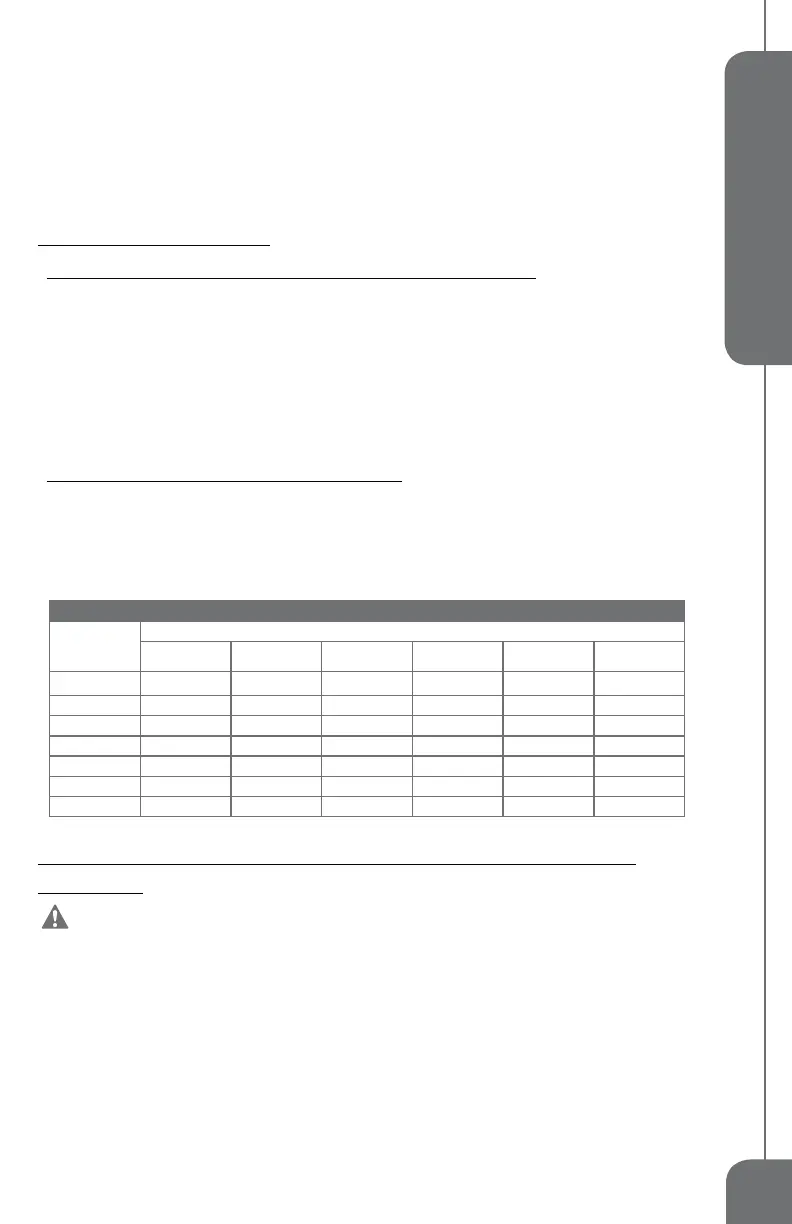5
English
SERVICE
• Have your power tool serviced by a qualified repair person using only identical
replacement parts. This will ensure that the safety of the power tool is maintained.
•
Service your power tool periodically. When cleaning a tool, be careful not to disassemble any
portion of the tool since internal wires may be misplaced or pinched.
SAVE THESE INSTRUCTIONS
EXTENSION CORDS
Grounded tools require a three wire extension cord. Double insulated tools can
use either a two or three wire extension cord. As the distance from the power supply outlet increases, you must
use a heavier gauge extension cord. Using extension cords with inadequately sized wire causes a serious drop
in voltage, resulting in loss of power and possible tool damage. Refer to the table shown below to determine the
required minimum wire size.
The smaller the gauge number of the wire, the greater the capacity of the cord. For example: a 14-gauge cord
can carry a higher current than a 16-gauge cord. When using more than one extension cord to make up the total
length, be sure each cord contains at least the minimum wire size required. If you are using one extension cord
for more than one tool, add the nameplate amperes and use the sum to determine the required minimum wire
size.
Guidelines for Using Extension Cords
• If you are using an extension cord outdoors, be sure it is marked with the suffix “W-A” (“W” in Canada) to
indicate that it is acceptable for outdoor use.
• Be sure your extension cord is properly wired and in good electrical condition. Always replace a damaged
extension cord or have it repaired by a qualified person before using it.
• Protect your extension cords from sharp objects, excessive heat, and damp or wet areas.
SPECIFIC SAFETY RULES FOR CORDLESS IMPACT
DRIVERS
WARNING: DO NOT LET COMFORT OR FAMILIARITY WITH PRODUCT (GAINED
FROM REPEATED USE) REPLACE STRICT ADHERENCE TO PRODUCT SAFETY RULES. If
you use this tool unsafe or incorrectly, you can suffer serious personal injury!
•
Hold the tool by insulated gripping surfaces when performing an operation
where the tool may contact hidden wiring. Contact with a “live” wire will make exposed metal parts of the tool
“live” and shock the operator.
•
Do not leave the tool running. Operate the tool only when hand-held.
•
Be aware that this tool is always in an operating condition, because it does not have
to be plugged into an electric outlet.
•
When operating the tool from an elevated position, be aware of people or things
beneath you.
Recommended Minimum Wire Gauge for Extension Cords (120 Volt)
Nameplate
Amperes
(At Full Load)
Extension Cord Length
25 Feet 50 Feet 75 Feet 100 Feet 150 Feet 200 Feet
0–2.0 18 18 18 18 16 16
2.1–3.4 18 18 18 16 14 14
3.5–5.0 18 18 16 14 12 12
5.1–7.0 18 16 14 12 12 10
7.1–12.0 18 14 12 10 8 8
12.1–16.0 14 12 10 10 8 6
16.1–20.0 12 10 8 8 6 6

